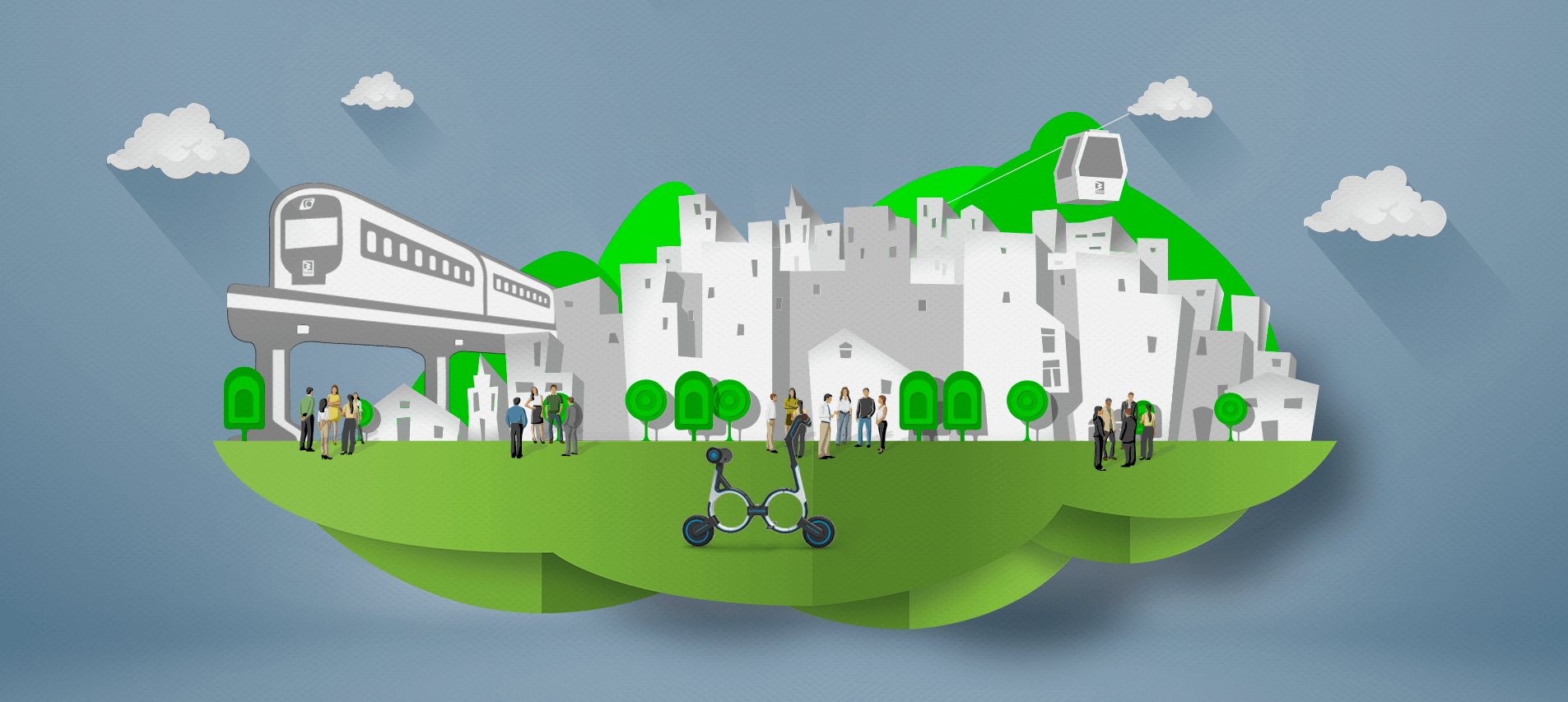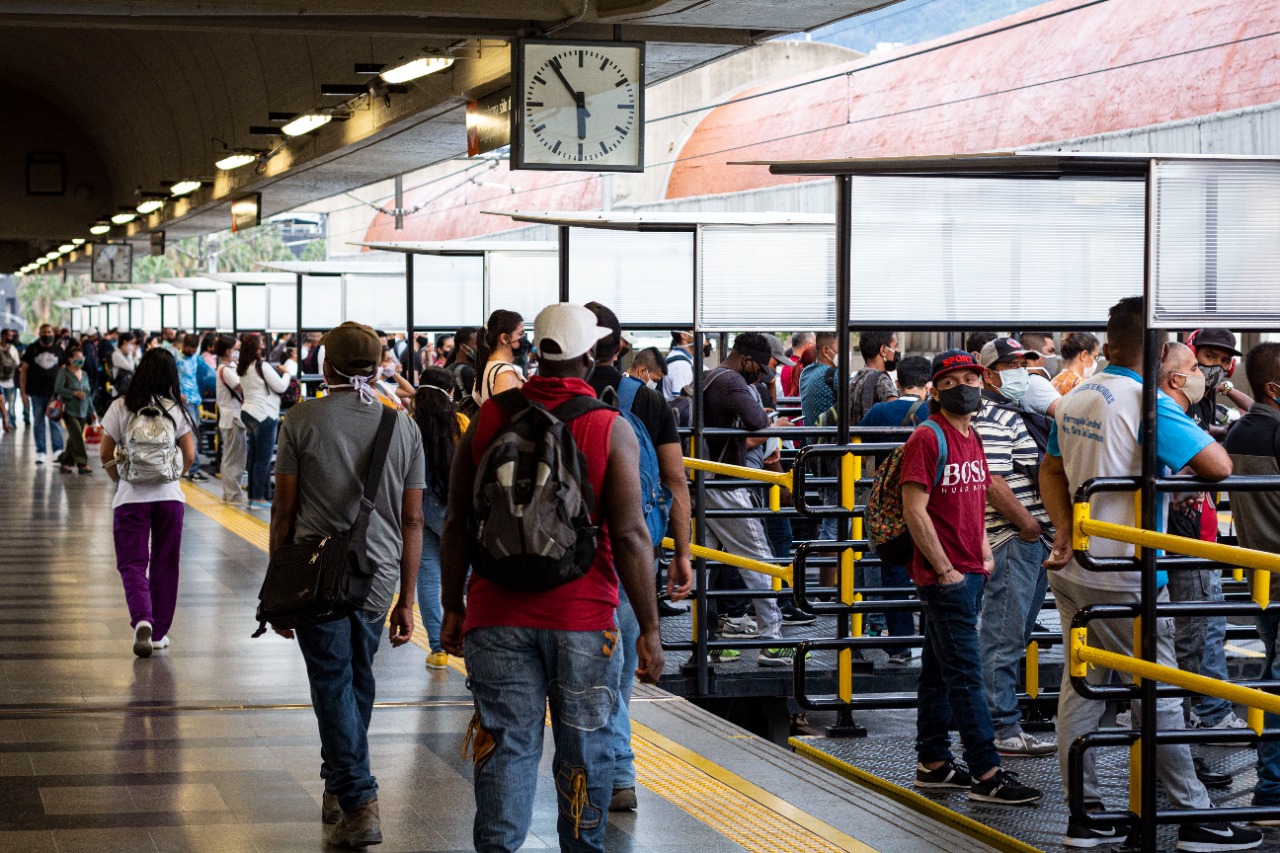
Mobility Challenge in San Antonio B
Current situation
The San Antonio B transfer station has a high flow of users throughout the day and in the afternoon rush hour when, especially, the capacity to accommodate users is affected in a representative manner. Taking into account its characteristics, different actions have been carried out and proposed to facilitate the mobility of our users, so that they can optimize their waiting and displacement.
However, the flow of people in this station has increased considerably, requiring the implementation of new strategies to improve mobility within the station, optimizing the performance of user movement and the operation of the Metro system.

Current solution
In 2012, the Company implemented fixed metal platforms that allow users to enter and exit almost simultaneously.
.jpeg?width=1200&height=799&name=metroReto2%20(1).jpeg)
Platforms SAB
The implementation of this solution has allowed:
- Avoid counterflows.
- Optimize train running time on Line B during rush hour from 4.75 min to 3.8 min.
- Decrease stopping time.
- Improve the train waiting area.
- Optimize space on platforms.
- Increase the speed and direction of outflow of people.
However, this solution has its limitations, such as:
- The train's stopping point is variable, since the train is driven manually and therefore we depend on the driver's expertise at the stopping point, even though we have the ATP system. This means that when the doors are opened, they are not necessarily in the center of the train, making the flow of passengers difficult.
- Currently the opening time of the doors on each side of the train has a difference of 10 seconds, to allow the exit of the users of the train before allowing the entry of new users from the SAB platform, this causes that sometimes the entry is done slowly and people are left without entering.
- It makes it difficult for the driver to identify the number of passengers entering the train and whether there is room on the train.
- Some users waiting on the metal platform for an emptier train prevent other people from entering or interrupt the flow.
- On some occasions, the slowness of some users at the exit of the train forces those entering the train to stay in the area of the opposite door, which prevents more people from entering.
- When users' access is obstructed, waiting times increase for those who remain on the platform.
As alternative actions to the platforms, the following have been proposed:
- Extension of the station's physical platform to the east, which is not possible due to the existing railroad signaling, and the streetcar line at the bottom of the San Antonio station.
- Make subsequent return. It is not viable due to the fact that the viaduct must be extended to the east with the implications indicated above.
- Changes in the signaling system to allow the train to stop at the exact point. It was discarded due to the high costs it would represent for the Company since it implies an automatic driving of the train.
- Double trains. It is currently not viable because the length of most of the platforms on the B line is less than the length of a double train and extending them implies high costs and infrastructure works.
Implementation of a platform perpendicular (north-south direction) to the two existing concrete platforms and after the location of the paratrain. It is not feasible because it does not guarantee the necessary distance for the operation of the paratrain.
Available solutions on the market:
No similar solutions have been found in the market for the operation of mass transit systems, or in other industries, that meet our needs.
What are we looking for?
Proposals that, as a minimum:
- Disruptive proposals.
- Have technical and economic viability.
- Significantly improve user service and operation at the SAB station.
- Involve elements of industry 4.0
- Stimulate the development of local industry.
- Present a business model in which the cost benefit is compelling to invest in the solution.
However, and definitely, the idea can NOT:
- To imply changes in the fare defined for the provision of Metro service.
- To be detrimental to public resources.
- Propose actions not contemplated in Colombian law.
- Endanger the safety of users and/or the Metro system.
Your idea will be analyzed when you present an implementation structure that includes:
- Structured proposal with its general description, detail of functionality, materials, benefits and implementation schedule.
- Business model, including cost-benefit analysis.
Analysis criteria
- Disruptive level: 20%.
- Technical viability: 30%
- Financial viability: 50%
Expert analysts
- Operative System
- Strategic planning
- Customer Service
- Infrastructure
- I+D+i


